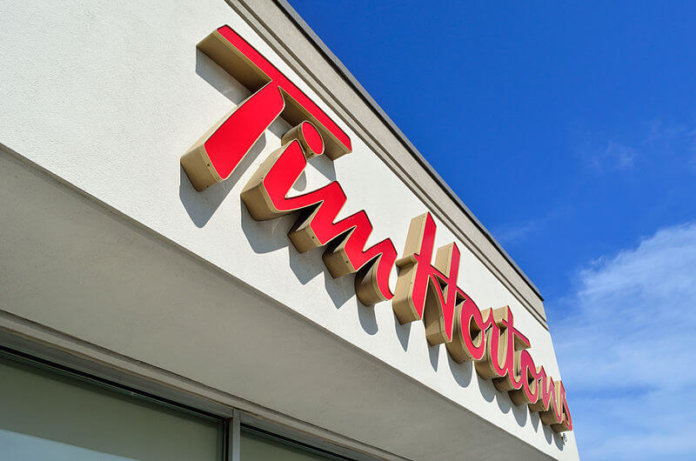
What’s as Canadian as ice hockey, maple syrup, and altruistic politeness? Hint: it’s the only place you can get a box of Timbits (branded doughnut-holes) and a double-double (coffee with two crèmes and two sugars). For more than 55 years now, many Canadians have ritualised a daily stop at the nearest Tim Hortons, the coffee and doughnut shop named after a famous hockey player. According to 2006 market share studies, Tim Hortons captured 62 per cent of the Canadian coffee market, while Starbucks came second with a diminutive 7 per cent.
What was once a uniquely Canadian experience is now being offered to coffee lovers all over the world. Tim Hortons opened their first Middle Eastern franchise in Dubai in 2011, and since then, they have since expanded to Qatar, Bahrain, Kuwait and Oman. In 2017, they broke into the South Pacific with locations in the Philippines, and in July of this year, they announced the addition of 1500 stores across China to open over the next decade.
These moves signal a deliberate strategy to become a global competitor. “We have two main priorities at Tim Hortons: building and strengthening our brand in Canada, and expanding our iconic Canadian brand to the rest of the world,” said Tim Hortons President Alex Macedo referring to the Chinese expansion.
So, what’s the secret behind the immense popularity of a simple coffee and doughnut shop?
The Birth of an Iconic Brand
The first Tim Hortons Donuts opened in Hamilton Ontario, in 1964. Its founder and namesake, Miles Gilbert ‘Tim’ Horton was a standout professional hockey player, perennial all-star and four-time Stanley Cup Champion. In those days, athlete’s salaries weren’t what they are today, so even top-tier players had to find other ways to make a living, especially in the off-season.

Horton’s first entrepreneurial venture was a hamburger stand, but when that failed, he decided to try his luck in another area of food service. The original Tim Hortons store sold only coffee and doughnuts and everything was ten cents. He began to collaborate with retired police officer Ron Joyce who saw possibilities for expansion – Joyce opened a further two locations cementing their partnership.
Tragedy struck on February 21, 1974, when Tim Horton lost control of his car and died in the ensuing accident. Joyce offered Tim Horton’s widow 1 million Canadian dollars for full ownership of the business, and she accepted. Once in control, Joyce sought to expand the franchise, and from the mid-1970s to the early 1990s, Joyce opened 500 stores across Canada.
Coffee, Doughnuts and Identity
Tim Hortons franchises are ubiquitous in Canada – on some stretches of road, it’s possible to see more than one location in the same field of view. It’s a daily pilgrimage for many, who stop for a coffee on the way to work or come to mingle on a break. Its unique non-denominational appeal sets it apart from competitors – patrons include construction workers, lawyers, teachers, doctors and the homeless. The brand has become intrinsically tied to Canadian identity:
“In so many ways the story of Tim Hortons is the essential Canadian story,” the late writer Pierre Berton, once said. “It is a story of success and tragedy, of big dreams and small towns, of old-fashioned values and tough-fisted business, of hard work and of hockey.”
Those who frequented Tim Hortons on a regular basis often claimed it was out of addiction rather than preference. It eventually got to the point where Snopes debunked an urban myth that Tim Hortons added nicotine to make their product addictive. Of course, coffee contains caffeine however, which is a stimulant, and Canadians drink more than almost any other nationality.
Moving South of the Border
After striking up a friendship with Wendy’s owner Dave Thomas, Ron Joyce decided to enter into business with the hamburger giant through a formal $620 million merger in 1995. The deal saw Tim Horton’s become a division of a US-based company.
The merger manifested in 13 new Wendy’s-Tim Hortons combination stores with plans to open an additional 20 a year in the US. Any concerns about a Canadian backlash against American ownership proved to be unfounded.
“While Canadians are normally sensitive to the threat of American-owned companies, the sale of this ‘national institution’ to an American hamburger company did not seem to affect Tim Hortons’ link to national mythology at all,” Toronto historian Steve Penfold told the Ottawa Citizen. “I think we feel a certain pride that we are exporting a bit of our culture to the US. It’s the reverse of the usual.”
Despite a sluggish start for the new Tim Hortons outlets in the US, they soon gained momentum. By the year 2000, Tim Hortons posted six consecutive quarters of double-digit growth and accounted for one-quarter to one-third of parent company Wendy’s earnings. Four years later, Tim Hortons accounted for 44% of Wendy’s second-quarter profits.
The Split with Wendy’s
Almost ten years after the merger, there was immense pressure building to separate. Officially, Wendy’s cited increased competition between the two brands as the reason for the split. Tim Hortons had been incorporating lunch menu items, and this was eating into Wendy’s business. However, the real driving force behind the move was a group of investors who wanted the stronger Tim Horton’s branch to thrive independently – significant investors Peter May and Nelson Pelz were two leaders of this faction.
On March 24th, 2006, shares of Tim Hortons sold in an IPO for a price of $27 per share. The IPO raised more than $700 million on the first day alone. For the next three years, the company would be based in Delaware until eventually moved back to Oakville Ontario, Canada in a 2009 corporate restructuring.
In 2013, Tim Horton’s could not have been in better shape. The company reported $794 million in revenue and $111 million in profit in one quarter alone. They had more than 4300 stores around the world, the majority being in Canada. They had rebounded from a tenuous experience with an American burger giant, assumedly something they wouldn’t try again.
Enter the Burger King
In August 2014, Burger King’s private equity owner, 3G Capital, announced plans to acquire Tim Hortons for $65.50 per share for a total value of more than $12.5 billion. For their part, Tim Hortons seemed to have learned one lesson from their experience with Wendy’s – as part of the arrangement, Burger King and Tim Hortons would continue to operate independently.
The acquisition caused more of a stir in Canada than the Wendy’s deal had almost 20 years earlier – 3G Capital had a reputation that preceded them. Observers warned of mass layoffs and depreciation in quality as likely outcomes from the merger.
However, the layoffs never materialised, and Tim Hortons was already facing criticism for serving frozen parbaked doughnuts instead of the in-store freshly made goods that had been the norm, and this policy had nothing to do with 3G Capital.
Still, their biggest self-inflicted PR blunder was yet to come. Earlier this year, after the Ontario government raised the minimum wage, Tim Hortons announced they were cutting employee paid breaks and healthcare contributions to make up the cost. Canadians were outraged:
“They have a near-religious brand in Canada,” one protestor told the Toronto Star this past January. “A family-friendly coffee shop for the average worker that takes care and invests in the communities it serves. I think these punitive attacks on workers fly in the face of the values that it purports to have.”
The incident delivered a severe blow to the company’s reputation. In an annual survey of the most popular Canadian brands, Tim Hortons was a regular in the top 5, placing 4th in 2017. In 2018, they placed 50th.
Uncertain Legacy
Despite the recent stumbles, Tom Hortons remains a brand like no other. They have easily surpassed McDonald’s for fast food superiority in Canada, and as for their cultural influence, the Canadian-Oxford Dictionary added double-double (the aforementioned coffee with two creams and two sugars) as an official entry as of 2004. Pragmatically however, it is yet to be seen whether Tim Hortons will reclaim the domestic popularity they enjoyed until recently, or whether their continued success will depend on markets outside of Canada.









